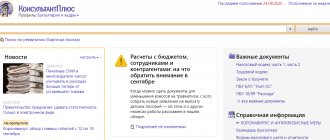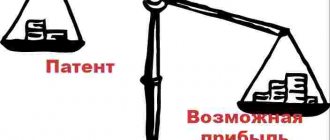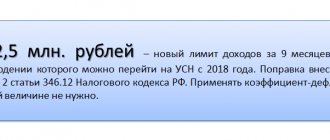Which enterprises and individual entrepreneurs are classified as agricultural producers?
The taxation system for agricultural producers was introduced with the aim of attracting new producers to this sector of our economy, as well as to reduce the tax burden and make life easier for existing enterprises in this industry.
It has another well-known name - the single agricultural tax, abbreviated as Unified Agricultural Tax. This special regime is discussed in Chapter. 26.1 Tax Code of the Russian Federation. Art. 346.2 of the Tax Code of the Russian Federation defines the following categories of taxpayers:
- agricultural companies and individual entrepreneurs who are engaged in the direct production, processing and further sale of agricultural goods and products;
- enterprises involved in fisheries.
In this case, the proceeds from the sale of such products must be at least 70% of the total revenue. For companies engaged in fishing, another condition for applying the Unified Agricultural Tax is the size of the hired workforce - no more than 300 people.
The list of agricultural products includes:
- crop production;
- livestock farming;
- agriculture on land;
- forestry;
- breeding fish and other aquatic resources.
Find out how organizations use the unified agricultural tax in ConsultantPlus. If you do not have access to the K+ system, get a trial online access for free.
On the issue of the concept of agricultural commodity producer
For the purposes of high-quality legal regulation of agricultural activities, the conceptual apparatus of adopted legislative and other regulatory legal acts plays an important role.
In particular, the concept of agricultural commodity producer is present in many federal laws, since it is decisive for state support of agricultural organizations and enterprises.
However, in different laws the concept of agricultural commodity producer is interpreted differently.
In some laws, the indicator is the total volume of production in value terms, and in others, the total amount of income. These values are always different.
It seems that quantitative indicators of the volume of produced or produced and processed agricultural products should be uniform throughout the entire legislative system and amount to 50% for agricultural products and 70% for fishery products, since due to the specifics of agricultural production and the current situation in the agricultural sector (price disparity for agricultural and industrial products, monopoly of processing organizations and enterprises, etc.) a higher figure is difficult to achieve.
A uniform concept and interpretation of legislative and other regulatory legal acts should contribute to the effectiveness of legal regulation in the agricultural sector and high-quality law enforcement practice to protect the rights and legitimate interests of agricultural business entities.
The conceptual apparatus of any legal science is a system of interconnected, coordinated basic key concepts of categories, [1] first of all, it must meet the requirements of scientific character, strict certainty, accuracy, completeness, capacity, clarity, intelligibility, unambiguity, unity throughout the entire system of legislation, compatibility with the complex of terms used in science, stability, avoiding violation of the logical boundaries of the concept being disclosed, and confusion of the meaning of the terms used. Agrarian legal science is no exception . An extremely important place in its composition is occupied by agrarian legal categories as generic concepts from which other definitions originate. The basic category includes the category “agricultural commodity producer” [2].
This category is extremely important, since the state, recognizing an agricultural producer as an economically weaker party, gives it a special legal status and provides it with state support, including tax benefits, lending, insurance, leasing, and provides subsidies and compensation. , subsidies, regulates prices for agricultural products, carries out purchasing and commodity interventions, protects the interests of domestic producers in the export and import of agricultural products, raw materials and food. A special procedure for debt restructuring and declaring insolvent (bankrupt) is provided for agricultural producers.
The criteria for recognizing an entity as an agricultural producer are enshrined in current legislation. Many federal laws contain legal definitions of the named concept, but in different interpretations. These definitions are contradictory, imperfect, and usually applied to “serve” only one law. According to V. A. Vlasov, there is a paradoxical situation: according to one law, the organization is agricultural, but according to another, it is not [3].
This situation has long been criticized in the literature, [4] where there is talk about eliminating contradictions in legislation, developing and consolidating a single concept of “ agricultural producer” taking into account modern realities and the experience of past years, based on philosophy, theory of state and law, civil law, etc. [5].
Its uniform interpretation is of great importance for all subjects of agrarian relations, law-making and law enforcement bodies. Terminological confusion does not allow us to understand the legal status of the relevant subjects, and, consequently, the legal regime in law enforcement.
How does Russian legislation define the concept of “agricultural producer” ?
In accordance with Art. 1 of the Federal Law of December 8, 1 9 9 5 No. 193-FZ “On Agricultural Cooperation” [6] “an agricultural producer is an individual or legal entity engaged in the production of agricultural products that constitute in value terms, more than 50% of the total volume of production, including the fishing artel (collective farm), the production of agricultural (fish) products and the volume of catching aquatic biological resources in which in value terms is more than 70% of the total volume of production .
According to Art. 2 of the Federal Law of July 9, 2002 No. 83-FZ “On the financial recovery of agricultural products .
In turn, the Federal Law will be completed on October 26, 2002 No. 127-FZ “On Insolvency (Bankruptcy)[8] does not use this concept, but uses the category “agricultural organization” as a legal entity, establishing special bankruptcy regimes for agricultural organizations and peasant (farmer) ) farms. Thus, it does not allow individual entrepreneurs engaged in the production of agricultural products to use a special bankruptcy regime. Under agricultural organizations in accordance with Art. 177 of the law refers to legal entities whose main activities are production or production and processing of agricultural products, the proceeds from the sale of which constitute at least 50 % of the total revenue. The revenue of fishing artels (collective farms) from the sale of produced or produced and processed agricultural products and caught (mined) aquatic biological resources must be no less than 70% of the total revenue.
According to Art. 346.2 of the Tax Code of the Russian Federation, for tax purposes, agricultural producers are recognized as organizations and individual entrepreneurs producing agricultural products, carrying out their primary and subsequent (industrial) processing (including on leased fixed assets) and selling these products, provided that in the total income from of the sale of goods (work, services) of such organizations and individual entrepreneurs, the share of income from the sale of agricultural products produced by them, including products of their primary processing, produced by them from agricultural raw materials of their own production, is at least 70%, as well as agricultural consumption Agricultural cooperatives (processing, marketing (trading), supply, horticultural, market gardening, livestock farming), recognized as such in accordance with the Federal Law “On Agricultural Cooperation” , which have the share of income from the sale of agricultural products of own production by members of these cooperatives, as well as from work performed (services) for members of these cooperatives, is at least 70% of the total income.
Agricultural producers also include towns and village-forming Russian fishery organizations, the number of employees in which, taking into account the family members living with them, is at least half the population of the corresponding settlement, which operate only fishing vessels that are in their ownership and are registered as a legal entity in accordance with the legislation of the Russian Federation and for which the volume of fish products sold by them and (or) caught objects of aquatic biological resources is in value terms more than 70% of the total volume of products sold by them. These rules also apply to peasant (farm) households.
For the purposes of the Federal Law of December 29, 2006 No. 264-FZ “On the Development of Agriculture [9], agricultural producers are recognized as organizations, individual entrepreneurs engaged in the production of agricultural products, their primary and subsequent (industrial y y) processing (including on leased fixed assets) in accordance with the list approved by the Government of the Russian Federation, and the sale of these products, provided that in the total income of agricultural producers the share of their sales is not less than 70% during a calendar year.
The following are also recognized as agricultural producers:
- Citizens running personal subsidiary plots (Federal Law of July 7, 2003 No. 112-FZ “On personal subsidiary plots” )[10];
- Agricultural consumer cooperatives (processing, marketing (trading), servicing (including credit), supply, procurement) (Federal Law “On Agricultural Cooperation” );
- Peasant (farm) farms (Federal Law of June 11, 2003 No. 74FZ “On Peasant (Farm) Economy ” ) [11].
Thus, it is obvious that the given legal definitions of the concept of “agricultural producer” differ significantly. But first, let’s figure out what the difference is between the concepts of “agricultural producer ” , “agricultural organization” and “agricultural enterprise”. These combinations have become familiar in ordinary speech, texts of regulations, and scientific literature.
The concept of “agricultural organization” as a subject of law indicates the organizational and legal form of a legal entity. It covers commercial and non-profit agricultural organizations, with the exception of enterprises. And by agricultural commodity producer we mean individual entrepreneurs, peasant (farm) enterprises, as well as legal entities of all possible organizational and legal forms in which producers of agricultural products can be created. In other words, any agricultural organization can be recognized as an agricultural producer.
The concept of “agricultural producer” is broader in scope than “agricultural organization” .
In turn, the concept of “agricultural enterprise” has a double meaning. This is both a subject of law and a property complex. In the first case, this term indicates the organizational and legal form of a legal entity - a state and municipal unitary enterprise. But in the interpretation of Article 132 of the Civil Code of the Russian Federation, the concept of “agricultural enterprise” denotes another phenomenon of the material world - an object of rights, a property complex used to carry out entrepreneurial activities in agriculture. Accordingly, any agricultural enterprise can be recognized as an agricultural producer.
The foregoing allows us to conclude that the concept of “agricultural commodity producer” is the broadest, most general, covering both agricultural organizations and enterprises.
The very concept of “commodity producer” has economic content. According to the correct remark of I.M. Lopina, if we proceed from the definition of a commodity as a product of labor produced for exchange (sale), then an agricultural commodity producer should be considered any person who produces agricultural products for sale [12].
Consequently, these are agricultural entrepreneurs, which include individual entrepreneurs, commercial organizations and enterprises, and peasant (farm) farms.
Regarding the peasant (farm) economy, it should be noted that in accordance with the Federal Law “On Peasant (Farm) Economy”, this is understood as a special form rural entrepreneurship, based on family ownership, without the formation of a legal entity. And clause 4 of Art. 1 of the Law directly states that a peasant (farm) enterprise can be recognized as an agricultural producer.
The Federal Law “On the Development of Agriculture” also includes citizens with private subsidiary plots as agricultural producers. But it is not entirely justified to fully designate them with this term, since personal subsidiary farming is a form of non-entrepreneurial activity for the production and processing of agricultural products by a citizen or a citizen and members of his family living together on a subsidiary plot in order to satisfy personal needs. Personal subsidiary farming is carried out in free time from the main job, it has an auxiliary and secondary nature, as clearly stated in Art. 2 of the Federal Law “On Personal Subsidiary Farming” .
At the same time, according to paragraph 3 of Art. 7 of the Federal Law “On Personal Subsistence Farming”, these farms are subject to state support measures provided for by the legislation of the Russian Federation for agricultural producers and carried out at the expense of the federal budget, budgets of constituent entities of the Russian Federation and local budgets. Therefore, it is necessary to remember that citizens running personal subsidiary plots are recognized as agricultural producers in order to provide them with state support.
The issue of classifying an agricultural consumer cooperative as an agricultural producer, which according to Art. 4 of the Federal Law “On Agricultural Cooperation” recognizes an agricultural cooperative created by agricultural producers and (or) citizens running private subsidiary plots, subject to their mandatory participation in the economic activities of the consumer cooperative.
The legal status of state and municipal unitary enterprises in accordance with the Civil Code of the Russian Federation is disclosed in the Federal Law of November 14, 2002 No. 161-FZ “On State and Municipal Unitary Enterprises” [13] whose action extends to the corresponding agricultural enterprises, but there is nothing in it talks about the peculiarities of their legal status. Agricultural producers often join associations when carrying out their activities. So according to Art. 121 of the Civil Code of the Russian Federation, commercial organizations, in order to coordinate their business activities, as well as to represent and protect common property interests, can, by agreement among themselves, create associations in the form of associations or unions that are non-profit organizations. Members of the association (union) retain their independence and rights as a legal entity.
Conclusions.
Thus, having examined the content of the concept of agricultural commodity producer, we come to the conclusion that, in fact, at the legislative level there are several official interpretations of this concept, which differ from each other in terms of the mandatory volume of own production and sales of agricultural products.
The Federal Law “On the Financial Recovery of Agricultural Producers” sets the figure at 50%, and in Part Two of the Tax Code of the Russian Federation and the Federal Law “On the Development of Agriculture” at 70%. In the federal laws “On Agricultural Cooperation” and “On Insolvency (Bankruptcy)” this indicator is differentiated: 50% for “simple” agricultural producers and 70% for fishing artels (collective farms).
In addition, the mathematical expressions “more” and “not less” used in laws have different meanings. “Not less” is equal to a set number and more, and “more” is only more.
As noted by M.I. Palladin, with any version of the estimated indicators of the degree of “agriculture”, it is legitimate and fair to characterize this or that agricultural organization based on the results of its activities over a long period (at least not less than 5 years) with the identification of certain trends in further development along the path of expanded or simple reproduction.” [14]. This opinion is primarily due to the fact that in lean years the share of agricultural products in the overall volume indicators may be lower than the established quantitative indicators, and then the agricultural organization will not be recognized as an agricultural producer with all the ensuing legal consequences. Therefore, the period for compliance with quantitative production volumes (production and processing) of agricultural products should be increased, but not for newly created agricultural producers, but for those that have already been operating for some time.
Taking into account all that has been said, we believe that the need to legislate for a clear definition of the concept of “agricultural producer” is obvious. It seems that it may have the following wording: agricultural producers are legal entities, peasant (farm) enterprises and individual entrepreneurs, whose main activities are the production of agricultural products, their processing and sale, provided that the income from the sale of these products is at least 50 % of the total income, and for fishing cooperatives - at least 70%. In addition, for the purposes of preferential taxation and the provision of other measures of state support, agricultural consumer cooperatives and citizens with personal subsidiary plots may be recognized as agricultural producers.
LITERATURE
- Alekseev S.S. General theory of law: In 2 volumes. M.: Legal. lit., T. 1. P. 34.
- Voronin B.A. Agrarian legal science of Russia: history and modernity: Monograph. Ekaterinburg: Publishing house UrGUA, p. 17.
- Vlasov V. A. Some aspects of improving legislation in the field of procurement of agricultural products for state and municipal needs // Current problems of agricultural law in Russia: theory and practice: Sat. scientific Art. M.: Law and State, 2004. -S. 177.
- Palladina M.I. On legal categories and terms in agricultural law // State and Law. No. 7. P. 43.
- PandakovK. G., Chernomorets A. E. Some problems of the conceptual apparatus of agrarian and land legislation // Agrarian legal science of Russia: history and development trends: Collect. monograph Ekaterinburg, S. 64.
- Voronin B. A. Agrarian legal science of Russia. WITH.
- NW RF. 1995. No. 50. Art. 4870.
- Northwestern Russian Federation. 2002. No. 28. Art. 2787
- Right there. No. 43. Art. 4190.
- SZ RF.2007.No.1 (Part I), Article 27.
- SZ RF.2003. No. 28. Art. 2881.
- Ros.gaz.2003.17 June.
- Lopina I.M. Legal aspects of the definition of the term “agricultural producer” // Agrarian and land law. 2005. No. 7. P. 23.
- SZ RF.2002.No.48.Art.4746.
- Palladina M.I. On legal categories and terms in agricultural law / State and Law. 2000. No. S.43.
- E.A. Grishenkova. Legal protection of the rights and legitimate interests of agricultural producers. Ekaterinburg. Publishing house UrGUA.2008.
What taxes does the Unified Agricultural Tax replace?
The taxation system for agricultural producers involves exemption from the main taxes paid by enterprises with a general tax regime:
- From corporate income tax, for individual entrepreneurs - from personal income tax on their own income.
- Property tax for organizations (or individuals).
Until 2021, special-regime Unified Agricultural Taxes were exempt from paying VAT tax. But since January 2021 the situation has changed. Now they are required to pay value added tax. But if a number of conditions are met, they have the right to receive tax exemption.
ConsultantPlus experts explained in detail what conditions must be met to be exempt from VAT and in which cases the Unified Agricultural Tax payer pays VAT and submits a declaration. Get trial access to the K+ system and upgrade to the Ready Solution for free.
The Unified Agricultural Tax does not exempt enterprises, including individual entrepreneurs, from calculating and paying personal income tax on the income of their employees. They still remain tax agents regarding the transfer of this tax. There are no tax benefits provided in this case.
You can learn more about the procedure for paying personal income tax by tax agents in the article “General procedure and deadlines for paying personal income tax”
Legislative concept of agricultural producer
In accordance with Art. 3 of Law No. 264-FZ of December 29, 2006 “On the Development of Agriculture”, agricultural producers are organizations and individual entrepreneurs that carry out activities in the direct production of agricultural products, their primary processing, subsequent industrial processing and sale.
A business entity is an agricultural producer provided that the share of income from agricultural activities is at least 70% of total income.
Let us note that the category of agricultural producers also includes organizations and individual entrepreneurs providing the following auxiliary services in the field of agriculture:
- preparing fields for sowing/harvesting, cultivating, spraying agricultural crops;
- pruning of fruit trees and vines;
- inspection of the condition of the herd, movement, grazing, caring for farm animals and poultry.
The following are also recognized as agricultural producers:
- agricultural consumer cooperatives;
- peasant farm;
- citizens running private farms.
We emphasize that in each case, in order to recognize a business entity as an agricultural producer, it is necessary to comply with the basic requirement - the share of income of the organization (individual entrepreneur, peasant farm) from agricultural activities is at least 70% of the total income.
Transition to Unified Agricultural Tax
The procedure for switching to a taxation system for agricultural producers is quite standard. The taxpayer must, by December 31 of the current year preceding the year of transition to the unified agricultural tax, submit a corresponding notification on the established form to his tax office. The current form of notification was approved by order of the Federal Tax Service of Russia dated January 28, 2013 No. ММВ [email protected]
The transition to a single agricultural tax is voluntary. This is a right, but not an obligation of the payer. If a company or individual entrepreneur has just registered with the tax authorities, they can submit an application to switch to the unified agricultural tax within 30 calendar days from the date of registration.
To switch to a taxation system for agricultural producers, it is not enough for a taxpayer to simply have the desire and submit a notification. It must also meet several criteria:
- Proceeds from the sale of agricultural products must be at least 70% of the total income of the payer.
- For fishery companies, as an additional condition for the transition to the Unified Agricultural Tax, the number of personnel is set at no more than 300 people (clause 2.1 of Article 346.2 of the Tax Code of the Russian Federation).
- The goods sold must relate to agricultural products (we indicated earlier what exactly this refers to). A more detailed list of such products can be found in the All-Russian Product Classifier (clause 3 of Article 346.2 of the Tax Code of the Russian Federation).
At the same time, companies should be engaged in the production of agricultural goods, and not just resell them.
The following tax regime cannot be applied:
- companies producing excisable products;
- organizations involved in the gambling business;
- budgetary, autonomous and government institutions.
We recommend that you familiarize yourself with the procedure for switching to the simplified tax system “Submitting a notification of transition to the simplified tax system in 2020–2021.”
Zero profit rate
So, for taxpayers – agricultural producers – there is a choice. They can apply a special tax regime in the form of payment of the unified agricultural tax or, having refused it, pay income tax at a zero rate for activities related to the sale of agricultural products produced by them, as well as the sale of produced and processed or their own agricultural products (clause 1.3 of Art. 284 Tax Code of the Russian Federation). These taxpayers must meet the criteria established by paragraph 2 of Article 346.2 of the Tax Code of the Russian Federation (for agriculture), or the criteria given in subparagraph 1 or 1.1 of paragraph 2.1 of the same article (for fishing organizations).
Namely: the share of proceeds from the sale of crop production, agriculture and forestry, livestock, cultivation and rearing of fish and other aquatic biological resources or their catch must be at least 70 percent of the total income from sales.
Tax reporting
The agricultural tax system gives some tax freedom to single tax payers. Thus, the payer must submit a tax return only based on the results of the tax period (year) by March 31 of the year following the previous one.
If an agricultural enterprise or individual entrepreneur is late in submitting reports, they will be required to pay a fine in the amount of 5–30% of the tax amount, but not less than 1,000 rubles.
For information on the procedure for submitting reports under the simplified tax system, read the article “Procedure for submitting reports under the simplified tax system.”
Calculation of single tax using an example
The single agricultural tax is calculated using a simple formula:
St x B,
where: St - tax rate;
B - tax base.
The rate in this case is 6%. The tax base is income reduced by the amount of expenses (clause 1 of Article 346.6 of the Tax Code of the Russian Federation). Income and expenses are taken into account on an accrual basis from January 1 of the tax period.
As income, income from sales and non-operating income determined in accordance with Chapter. 25 Tax Code of the Russian Federation.
An enterprise can reduce revenue received by expenses incurred, for example:
- for expenses associated with the purchase and overhaul of fixed assets;
- office;
- expenses for the purchase and creation of intangible assets;
- rent and leasing payments;
- material costs;
- remuneration of hired personnel;
- compulsory and voluntary insurance;
- fire safety expenses;
- transportation costs, including maintenance of vehicles;
- travel expenses;
- services of accounting, lawyers, auditors and notaries;
- communication services, postal and telegraph expenses;
- carrying out various types of examinations;
- commissions;
- advertising, etc.
A complete list of such expenses can be found in paragraph 2 of Art. 346.5 Tax Code of the Russian Federation. Agricultural organizations also have the right to take into account losses from previous years as expenses.
Let's look at a simple example of calculating the “agricultural” tax. All data in it is conditional.
Example
IP Asatin A.S. is engaged in fishing activities (fish breeding) for the subsequent sale of products. Since 20XX, it has been applying a taxation system for agricultural producers.
Initial data for 20XX:
- Income from the sale of farmed fish for the year 20XX, recognized in accordance with Ch. 25 of the Tax Code of the Russian Federation, - 9,000,000 rubles.
- Expenses for the year 20XX, recognized in accordance with clause 2 of Art. 346.5 of the Tax Code of the Russian Federation, - 6,500,000 rubles. This includes material costs, labor costs for hired personnel, business trips, costs for maintenance and upkeep of equipment (fixed assets), transportation, etc.
- Loss for the year 20XX - 200,000 rubles.
- Payment of single tax (advance payment for the 1st half of the year) - 20,000 rubles.
- Payment of single tax (advance payment for the 2nd half of the year) - 30,000 rubles.
We will calculate the amount of tax to be transferred to the budget.
- We determine the tax base: 9,000,000 – 6,500,000 = 2,500,000 rubles.
- We reduce the tax base for the 2014 loss: 2,500,000 – 200,000 = 2,300,000 rubles.
- We calculate the amount of single tax for the year 20XX: 2,300,000 x 6% = 138,000 rubles.
- Let's calculate the final amount of single tax to be transferred to the budget for the year 20XX. To do this, subtract the amount of advance payments: 138,000 – 20,000 – 30,000 = 88 rubles.
So, individual entrepreneur A.S. Asatin must transfer 88,000 rubles to the budget by March 31, 20XX. Before the same date, he is required to submit a tax return for the year 20XX.
On the grouping of expenses for profit tax purposes, see the article “The concept of expenses and their grouping according to the norms of Article 252 of the Tax Code of the Russian Federation.”
What income is subject to the zero rate?
According to clause 1.3 of Art. 284 of the Tax Code of the Russian Federation for agricultural producers, the corporate income tax rate is set at 0% only in relation to activities related to the sale of agricultural products produced by them, as well as the sale of their own agricultural products produced and processed. For activities not related to agricultural production, a general rate of 20% applies.
Note that, unlike educational or medical organizations, agricultural producers do not have the right to choose which rate - generally established (20%) or special (0%) - to apply when calculating tax on profits received from agricultural activities. This profit should only be taxed at a 0% rate.
In relation to income from other types of activities, agricultural producers apply the tax rates established by Article 284 of the Tax Code of the Russian Federation. At the same time, they must keep separate records of income and expenses (clause 2 of Article 274 of the Tax Code of the Russian Federation).
It should be noted that paragraph 1.3 of Article 284 of the Tax Code of the Russian Federation speaks not just about the sale of agricultural products, but about activities related to such sales. Therefore, this can be any kind of income, even non-operating income, if it is directly related to the main agricultural activity. Then a 0 percent rate may be applied to them based on paragraph 2 of Article 274 of the Tax Code of the Russian Federation.
According to paragraph 2 of Article 274 of the Tax Code of the Russian Federation, the tax base for profits taxed at a rate different from the rate specified in paragraph 1 of Art. 284 of the Tax Code of the Russian Federation (20 percent), is determined by the taxpayer separately. In this case, the taxpayer must keep separate records of income (expenses) for transactions for which a different procedure for accounting for profit and loss is provided for.
Income for the purposes of Chapter 25 of the Tax Code of the Russian Federation includes (clause 1 of Article 248 of the Tax Code of the Russian Federation):
- income from the sale of goods (works, services) and property rights;
- non-operating income.
Consequently, the procedure for determining the tax base for profits not taxed at a rate of 20 percent by a taxpayer applies to all groups of income, including non-operating income.
Based on this, expenses such as, for example, compensation for damage incurred as a result of the death of animals due to poor-quality feed, can be considered as non-operating income associated with the sale of agricultural products produced by agricultural producers, as well as those produced and processed by these organizations own agricultural products. This means that a 0 percent income tax rate can be applied to these incomes. The Russian Ministry of Finance drew attention to this in a letter dated February 12, 2021 No. 03-03-06/1/7737.
This conclusion may also apply to other similar income received by agricultural producers in the course of their activities.
Thus, income and expenses (including non-operating income and expenses) must be accounted for separately for tax purposes by types of activities taxed at different rates.
Payment of single tax
The unified agricultural tax is transferred by the taxpayer (clause 5 of Article 346.9 of the Tax Code of the Russian Federation):
- before July 25 - advance payment for the 1st half of the year;
- until March 31 of the year following the tax period - the remaining amount of the single tax minus advance payments.
The single tax is transferred to the tax office by bank payment order indicating the necessary budget classification codes and details.
In case of non-payment of the single tax, a fine of 20–40% of the tax amount is provided.
How to take into account fines for late or incomplete payment of taxes (contributions) and fines in connection with violations when submitting reports, find out in ConsultantPlus. If you do not have access to the K+ system, get a trial online access for free.
Specifics of accounting in agricultural production
Agricultural production is distinguished from other industries by a number of features, which causes uniqueness in accounting.
The specificity lies primarily in the fact that the production process is associated with living organisms and the earth, as well as with plants that act as objects of labor.
With the development of production forces, the means of production are qualitatively modified and quantitatively increased. Less advanced and productive production means are being replaced by new ones. Land in agriculture is the most important means of production, and it is not possible to replace it with any other. At the same time, the limited size of the land does not mean at all that its productive forces are limited; on the contrary, with the development of scientific and technological progress they are constantly growing.
To control the level of production costs in the agricultural industry, in addition to planned and actual, expected costs are calculated. The expected cost, as well as financial results, are determined as of October 1 based on data on actual costs and products received over the past 9 months.
Animal accounting also has its own characteristics, which are taken into account in both fixed and working capital. For example, a dairy cow herd is taken into account as part of fixed assets, partially replenished by young animals raised on their own farm. This feature necessitates the need to reflect in accounting the transition from working capital to fixed assets.
Results
The use of the taxation system for agricultural producers is voluntary. To switch to it, you must submit a notification on the prescribed form to the tax office at the place of registration.
A nice feature of the unified agricultural tax is the reporting period of six months and the transfer of taxes in advance payments once every 6 months. This is what makes it different from most taxes in our economic system.
Only producers of agricultural and fishery products have the right to apply such a special regime. But they must also meet certain requirements.
The Unified Agricultural Tax does not exempt agricultural enterprises from the function of a tax agent when calculating and paying personal income tax from the wages of their employees. The revenue received can be reduced by the amount of own expenses determined according to the tax standards of Chapter. 25 Tax Code of the Russian Federation.
There is one more convenience for the taxpayer.
The deadlines for transferring the single tax are the same as the deadlines for submitting a tax return. There are penalties for failure to submit tax reports and late payment of taxes. You can find more complete information on the topic in ConsultantPlus. Free trial access to the system for 2 days.
How to obtain the status of an agricultural producer
26.1 of the Tax Code of the Russian Federation, dedicated to the Unified Agricultural Tax. If we turn to this norm, then agricultural producers for tax purposes are recognized as: 1) organizations that produce agricultural products, carry out their primary and subsequent (industrial) processing (including on leased fixed assets) and sell this products; 2) agricultural consumer cooperatives (processing, marketing (trading), supply, horticultural, gardening, livestock), recognized as such in accordance with Federal Law of December 8, 1995 N 193-FZ “On Agricultural Cooperation”. In both cases a condition must be met - in the total income from the sale of such organizations, the share of income from the sale of agricultural products produced by them, including products of its primary processing, produced by them from agricultural
Rebus Company
- primary processing, subsequent industrial processing of agricultural products;
- sales of agricultural goods;
- production of agricultural products;
- provision of support services to agricultural producers.
- production of agricultural products;
- primary processing, subsequent industrial processing of agricultural products;
- provision of support services to agricultural producers.
- sales of agricultural goods;
In accordance with Article 2.1 of Federal Law No. 110-FZ, in order for an organization to take advantage of preferential tax treatment, it must have the status of an agricultural producer, and it must also conduct activities related to the sale of its own produced and processed agricultural products. That is why it is so important now to consider which regulations provide the definition of “agricultural producer”
Teleflot consulting
Funds are allocated in the form of a development grant. In addition to preferential lending, farmers and large agricultural producers can always count on additional funding from the state or the Regional Administration. In small towns or rural settlements, peasant farms and cooperatives, in 7/10 cases, are the only way to earn money for the majority of residents. Therefore, it is in the interests of citizens to support in every possible way
- sales of agricultural goods;
- production of agricultural products;
- primary processing, subsequent industrial processing of agricultural products;
- provision of support services to agricultural producers.







